Rate Cut Cycles: Pivoting Prices Lower
Valuations matter, eventually.
Reminiscing today about the 100 year Austrian bond issued in 2017 at 2.1%, which I found amusing at the time, considering the history of Austria within the past 100 or so years.
I was reminded then of this passage from The World of Yesterday, about the Austrian hyperinflation of 1921-1922:
At first the farmers were happy with all the paper money coming in for their butter and eggs, and they in turn hoarded the banknotes. But as soon as they took their fat wallets to town to buy things for themselves, they discovered, to their discomfiture, that they had asked only five times the price for their food they sold, but meanwhile the price of the scythes, hammers and pots and pans they wanted to buy had risen by twenty or fifty times.
By the time I tweeted this in 2019, the price of the bond had doubled to 202.
Around the same time The Economist crowed, “Austria’s 100-year bond has delivered stunning returns,” adding, “Its price will crash if interest rates rise. But most buyers won’t live long enough to regret it.”
Funny story…
As an aside, Karl Marx once described "𝘛𝘩𝘦 𝘌𝘤𝘰𝘯𝘰𝘮𝘪𝘴𝘵 as the organ of “the aristocracy of finance.”
Outstanding to see from a regulator!
As a longstanding federal enforcement official, I am significantly concerned that Goldman is a repeat defendant in federal enforcement cases. Goldman has a long history of violating federal laws, getting caught, and then settling with federal agencies.
Not only is Goldman a repeat defendant in CFTC enforcement actions, including some brought before my tenure,[2] it has been the defendant in many other federal enforcement actions by other federal agencies. That includes two actions brought by the Securities and Exchange Commission in the past year.[3] Before my tenure at the CFTC, I oversaw an investigation of Goldman in my capacity as the Special Inspector General for TARP that resulted in a Department of Justice civil action where Goldman admitted to fraud in connection with its sale of toxic residential mortgage backed securities that contributed to the 2008 financial crisis, a case where Goldman paid more than $5 billion.[4]
These enforcement actions evidence Goldman’s culture of non-compliance. Instead of creating a culture where Goldman invests in stronger controls and supervision, and then regularly reviews those controls and supervision to ensure that it is not violating the law, Goldman has created a culture of being a repeat federal defendant.
I am concerned that each settlement for each specific illegal act may be viewed by the defendant in a silo, without painting a larger picture of the failure of corporate culture that is evidenced by repeated enforcement cases. I am also concerned that the defendant may view paying the penalty as a cost of doing business.
Eric Holder in 2013 explaining his policy of Too Big To Jail
People wonder why fraud’s up so much - it all started during the pandemic. My estimate is there was probably a million new people who learned how to commit fraud during Covid, because they were going after PPP money, and unemployment, and they never went back to their day job. There’s all these million fraudsters now are all going out, and they’re targeting cars. One interesting thing I’ll throw out - we talked about synthetic identity - we went and looked at all the synthetic identity out of Chicago, last year, and we actually did a search for PPP loans - we wanted to see if those people who bought a car with a synthetic identity ever try to get a PPP loan, and 76% of the people that went into dealerships to get a car with a synthetic identity last year had gotten a PPP loan the prior year.
If you’re unfamiliar with Jeff Snider, he’s a guy I’ve followed for a long time who puts out a ton of content mostly related to what I call the global financial plumbing. I like Jeff, but I sometimes want to throw things at him, largely due to semantic issues. For example, he’s been talking about deflation ever since I started following him. I understand what he’s talking about, but sometimes it bugs me, which is fine. He’s a good guy. For example, he put out this gem six years ago:
The Federal Reserve is not a cabal of evil geniuses dedicated to bringing down the global order so as to create a new one with its Wall Street masters in complete control. They are instead a clown-show, a remedial class of halfwits and empty suits opining on topics they would in a just society be banished from entirely.
The other day he was talking about the Eurodollar collateral system, and particularly Italian bonds, and how a rise in the spread between German and Italian bonds shows a revaluation may be in place. I can’t do his commentary justice, so if you haven’t, check him out and see if he’s for you.
German 10-year yield
Italian 10-year yield
“Lesson Learned on Bond Funds from 2020, why did I lock up my money for 1.3% yield to maturity again?”
I started doing a 60/40 VTSAX/VUSUX strategy in 2017, need less to say while VTSAX carried the portfolio, VUSUX is down 40% from peak, even if you factor in the yield.
Months before the collapse of FTX, some of its U.S.-based employees discovered the so-called backdoor that Alameda Research allegedly used to withdraw billions of dollars of customer funds from the cryptocurrency exchange, people familiar with the matter said.
The employees who made the discovery reported it to the boss of their division, who discussed it with one of FTX founder Sam Bankman-Fried’s lieutenants, some of the people said. But the problem never got fixed. In the summer of 2022, the leader of the team that raised concerns about Alameda’s special privileges was fired.
My B.S. meter on SBF was off the charts. I cannot believe so many smart, savvy people were apparently taken in by him, but, looking at history, I should not be at all surprised.
If you subscribe to Grant Williams, check out the interview he did with David Dorr in December 2022.
As someone said in the FT, “the line between weaving a fantastic vision of the future and securities fraud can be quite thin.”
Rob Urie: Americans Are Unleashing Monsters They Have No Idea How to Contain
Powerful article. I did a thread on it.
The other day in Almost Irresponsible I talked about “valuation,” particularly of homes. Here’s a post from a San Diego realtor I’ve followed since the last bubble, talking about prices being set on the margin:
“The big threat isn’t going to be foreclosures. It will be the equity-rich sellers who dump on price to get out – and they will impact future sales. A couple of lowballs can turn into a trend!”
How the Fed Destroyed the Housing Market and Created Inflation in Pictures I started following Mike Shedlock before the last housing bubble, but after the DotCom bubble. Good thing there’s always a newer and bigger bubble!
For calculating inflation, the BLS uses the fictitious “owners’ equivalent rent” (OER). Home maintenance costs rise with the price of labor, which in turns rises with the cost of health insurance and, thus, at a higher rate than overall CPI. I wonder if inflation is understated partly because it assumes that Americans will live in ever-shabbier houses. The shabbiness wouldn’t be compensated for in OEI because owners aren’t likely to notice how crummy their house has become compared to a new house (boiling frog syndrome, another false premise of Science).
In other words, our houses cost us way more than we think, either explicitly in money if we do keep them up or implicitly in shabbiness if we don’t, and that might lead to inflation being understated (since we would have to spend a lot more to maintain our lifestyle).
I didn’t realize “Content Houses” were a thing. I missed this in 2020 (co-written by goofball Taylor Lorenz!):
TikTok Mansions Are Publicly Traded Now
A business trying to make money off mansions full of TikTok influencers has gone public on the stock market through an unusual deal. It involves a former Chinese health care company, and if that sounds confusing, well, we can explain.
Social media entrepreneurs have rushed to find ways to make money from stars on popular platforms like TikTok. West of Hudson Group, for one, operates a network of content houses where many prominent young influencers live. Houses like these function as management companies, taking a percentage of revenue from the creators living in them. The influencers often don’t pay rent, but produce content for brands and promote products as a form of in-kind rent. Dozens of influencer houses have arrived in the Los Angeles area over the last year, and the companies that run them have been searching for sustainable business models. Going public, though, is a new strategy.
West of Hudson was acquired this week by Tongji Healthcare Group, an entity in Las Vegas that was incorporated by a Chinese hospital in 2006 but had no assets at the end of 2019. The deal was a reverse takeover, in which a private company (in this case, West of Hudson) is acquired by an already-public one (Tongji Healthcare) but ends up in control. The deal closed on Wednesday. There were more maneuvers behind the scenes. Before the reverse merger, Tongji itself was acquired by the investors who control West of Hudson, a New Jersey real estate operator named Amir Ben-Yohanan and his business partners.
What it all adds up to is that the combined company, which has applied to be renamed Clubhouse Media Group, is now listed on the so-called pink sheets market, where tiny public and often speculative companies trade. On Friday, Tongji’s stock closed at $2.30, 38 percent below its August high.
Ok, sounds totally legit (today the obvious scam stock trades at $0.0002. Looks like it traded over $16 in early 2021.
A couple comments on the above article from back in 2020:
This week, in L.A. Magazine (also written by goofball Taylor Lorenz): Is L.A.'s Hype House Era Officially Over?
On a recent sunny afternoon in Los Angeles, real estate developer Danny Fitzgerald paced the halls of one of his 11,000 square foot Hollywood Hills mega mansions and reminisced about the famous influencers who once roamed its halls.
"We've had Tana Mongeaau, that girl that made two and a half million her first year," he said of the famous YouTube star. "It was amazing. We had FaZe Clan [the gaming collective] when they were kids."
Now, several of his most luxurious properties, which housed generations of content creators, stand empty.
For the past 15 years, Los Angeles has been littered with content houses. Content houses, (also known as collab or hype houses) are a long-running tradition in the influencer world. Groups of YouTubers, TikTok stars, Twitch streamers and so on, live together and create content on a near 24-7 basis, while supporting each other, appearing in each other's videos and collectively landing brand deals.
But lately there are signs the boom may be over. Some of Los Angeles' most iconic content mansions, like those owned by Fitzgerald, remain without tenants. "It's not the [content house] golden era anymore," said Walid Mohammed, CEO of The Breadwinners Club, an advertising agency in Los Angeles.
I haven’t personally checked this, but this is supposed to be, “Orange County, CA. Hearted homes are all the SFH bought during 2022/23 and put to rent. Sitting vacant.” This is a very pricy area.
The Fed wants you to believe that they’re in charge. They want you to believe that there’s two people sitting in the cockpit, and they’re driving the plane, but the reality is that the Fed makes this stuff up as they go. Scientists follow the rules of science, Fed officials make up the rules to suit the outcome that they want, and that’s a very different thing.
2007-2008 Rate Cutting Cycle
You can see below that the Fed began cutting at the September 18, 2007 meeting, to 4.75%, having previous taken the Fed Funds rate from 1% in mid-2003 to 5.25% by mid-2006. Within 15 months from 2007 to 2008, the Fed continuously dropped rates until they reached 0%, the lowest since 1958.
Over this 15-month period after the first rate cut, as rates plummeted from a peak of 5.25% to 0%, the S&P 500 index fell 41.7%, from 1519.78 to 885.28.
The 2000-2003 Rate Cut Cycle
In this example, the Fed began cutting the Fed Funds rate at the January 3, 2001 meeting, to 6.00%, down from a high of 6.5% set in May 2000.
Over the next two and one-half years, the Fed cut rates to a low of 1%.
Over this 29-month period after the first rate cut, as rates plummeted from a peak of 6.50% to 1%, the S&P 500 index fell 27%, from 1347.56 to 983.45 (the Nasdaq composite fell over 38.6%).
Everyone is waiting for the Fed to pivot. Maybe they should reconsider that.
Meanwhile, in CRE-land…
An affiliate of New York-based Blackstone sold the building at 650 7th St. to Southern California-based LBA Realty for $25.4 million, according to the Business Times. Blackstone purchased the building about seven years ago for $50.5 million.
Austin: A parking-free, 30-unit apartment building that gained attention as one of the first attempts to bring “missing middle” housing downtown has been turned over to its lender after failing to generate enough occupancy to operate successfully.




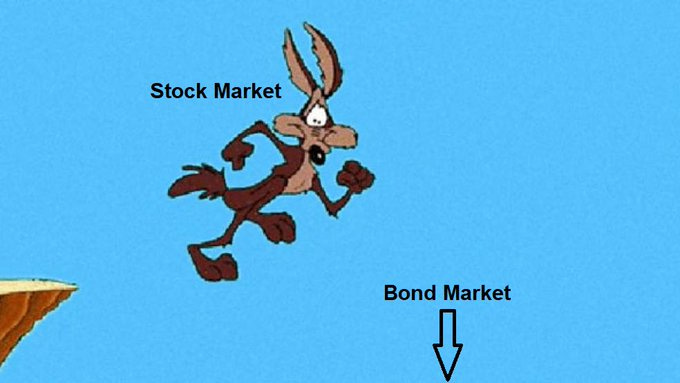















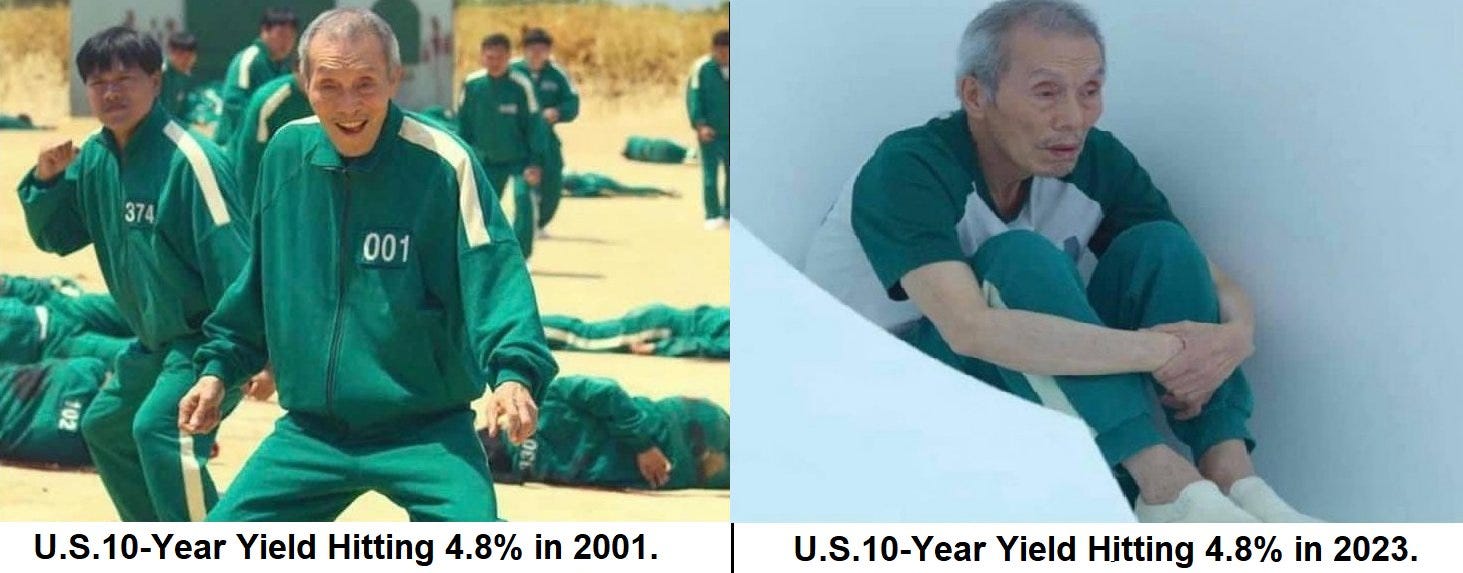

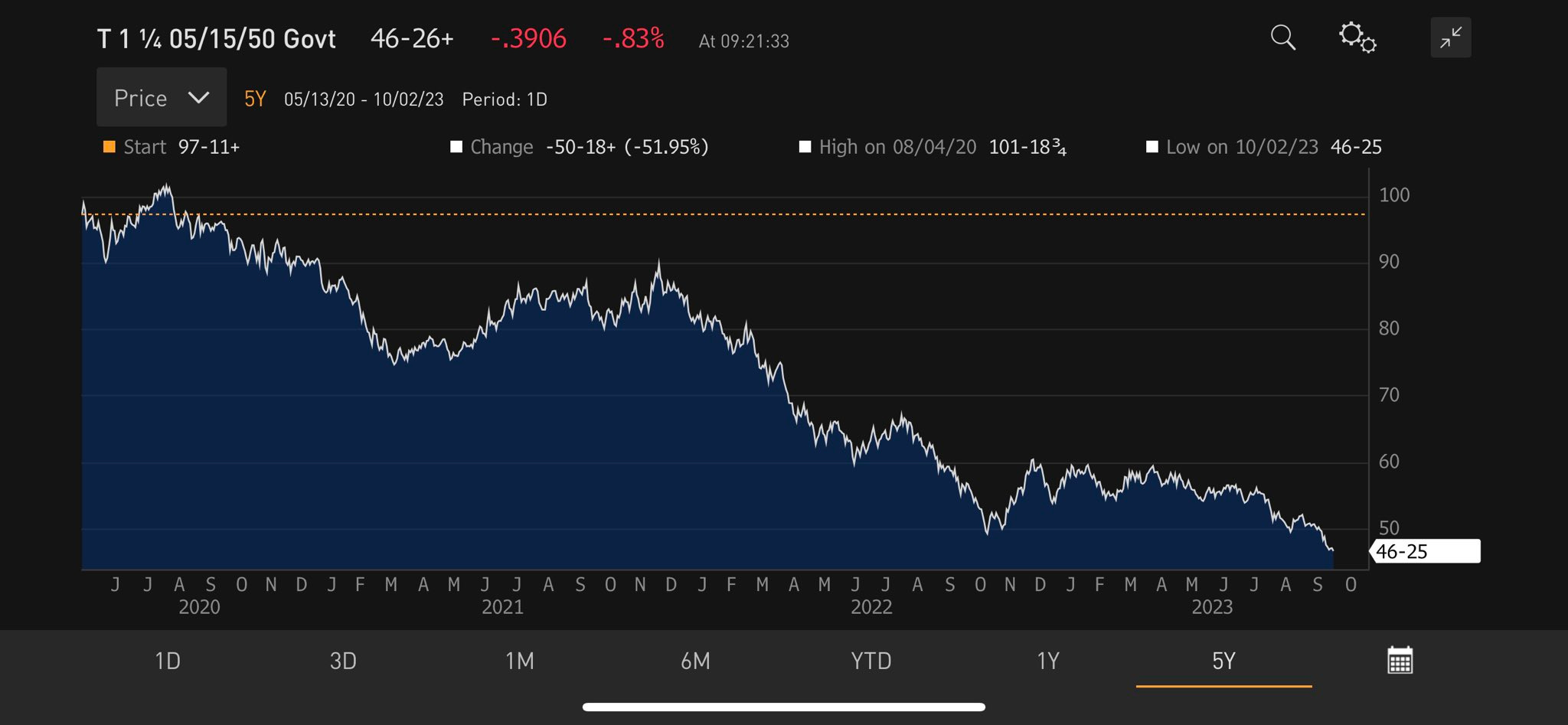


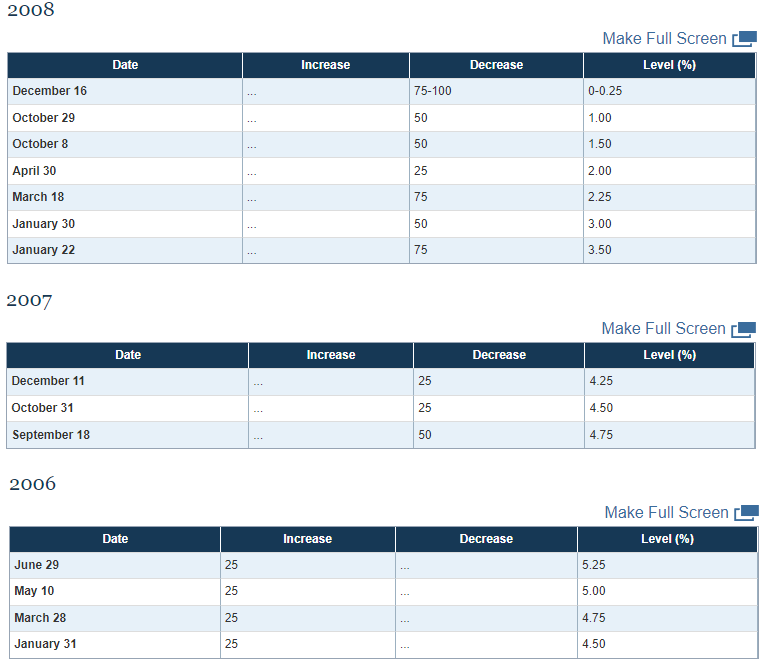

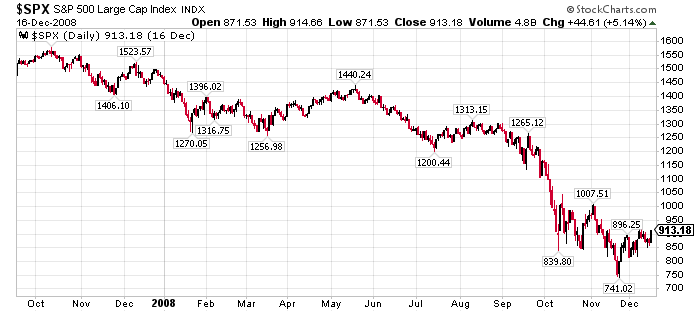
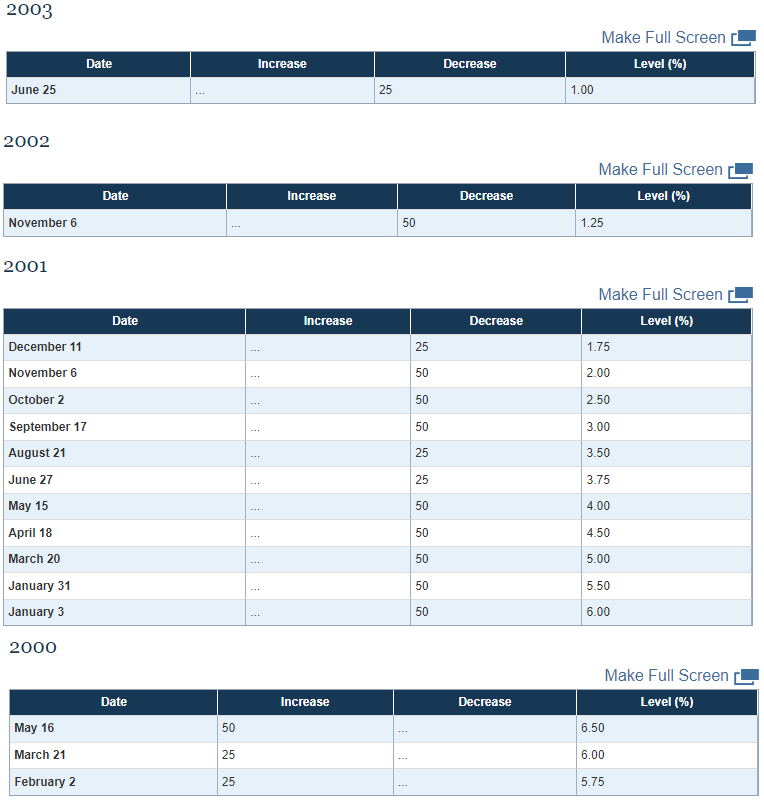
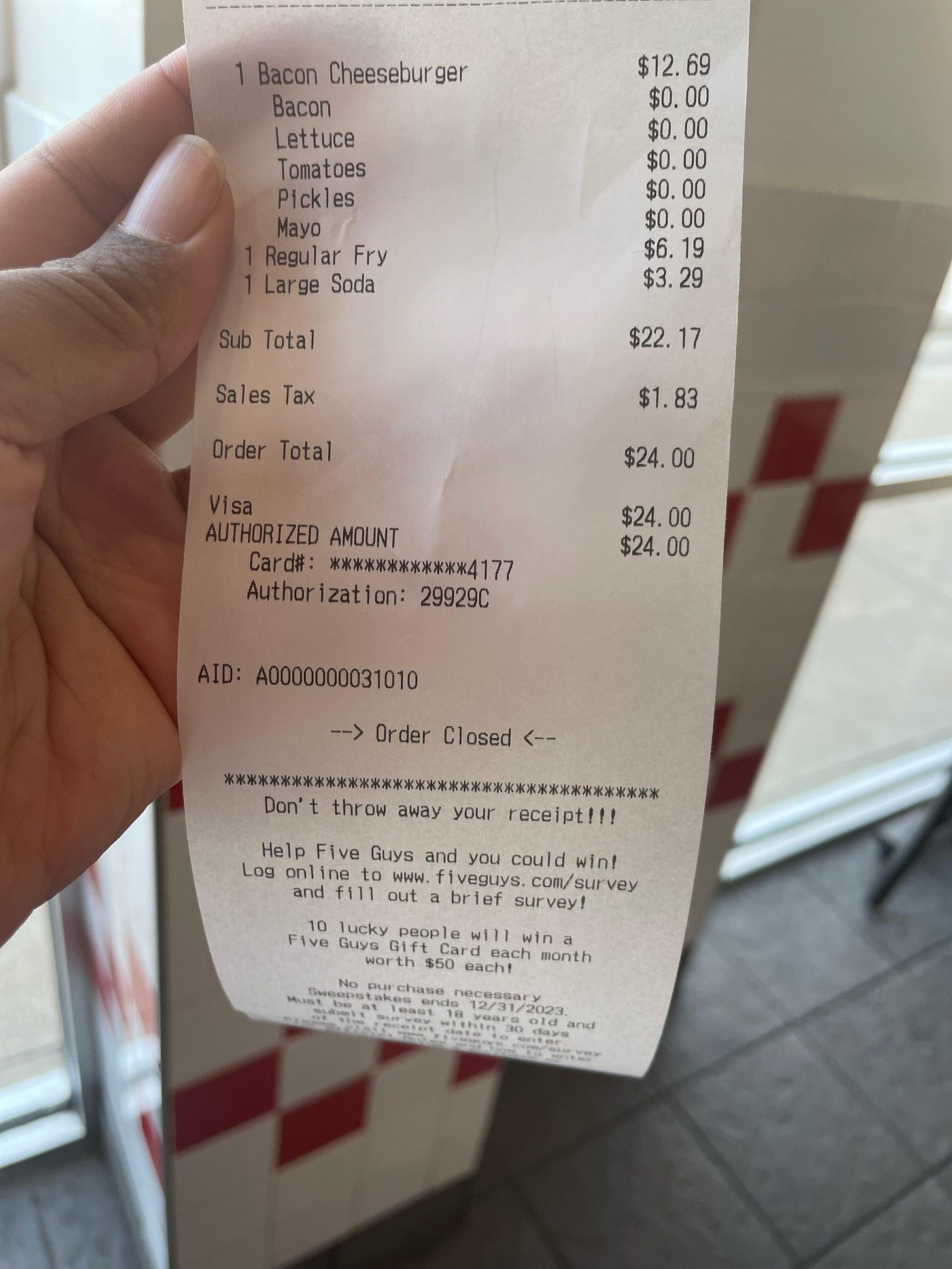
Excellent stuff. I feel the same about Snider: he's always insisting that "it's not money printing". Please.
They have a "three strikes" rule for felons to put them in prison for life. Perhaps the congress could be challenged to require that any financial enterprise which has been fined for wrongdoing more than three times in the last fifteen years and is fined again cannot be licensed to operate in the United States or in any of the states. Further that the chief executive officer, chief financial officer, and chief legal counsel are barred from holding any licence to work in securities, including securities law thereafter. I myself would put them into maximum security prison in the general population, but we can discuss whether that is going too far or not far enough. I would also require that all the pay for every executive in the company, including bonuses, stock, options, and pensions be forfeit and distributed to the victims of their crimes. Make it as personal as possible. If the law is meant to deter crime, these would be deterrents.
But I don't think the congress would ever make such a law. They are paid prostitutes of the military industrial financial pharmaceutical complex. Nevertheless it's a pretty thought to ponder.